Siem Reap Cambodia Day 2: Angkor Wat, Bayon, Banteay Srei, Roluos Group Temples, Bakong, Preah Ko and Lo Lei
Siem Reap Cambodia Day 2: Angkor Wat, Bayon, Banteay Srei, Roluos Group Temples, Bakong, Preah Ko and Lo Lei
We had an adventurous day for our first day in Siem Reap and we had a packed second day. When I booked our tour package on AirAsiaGo.com but it was only for half day so we added another half day tour thanks to the advice from the tour guide. Of course, it comes with a price but it was worth it.
We were supposed to leave our hotel at 4.30 am for the sunrise view at Angkor Wat temple but we woke up late! However we still manage to reach there on time, thanks to our speedy van driver.
Angkor Wat Temple
For those who didn’t know, you need to buy passes to enter Angkor Wat circuit. Our advice is to buy the 3 days pass as there are quite a number of temples within the circuit. It will be easier for you to move in and out of the circuit with the three day pass.
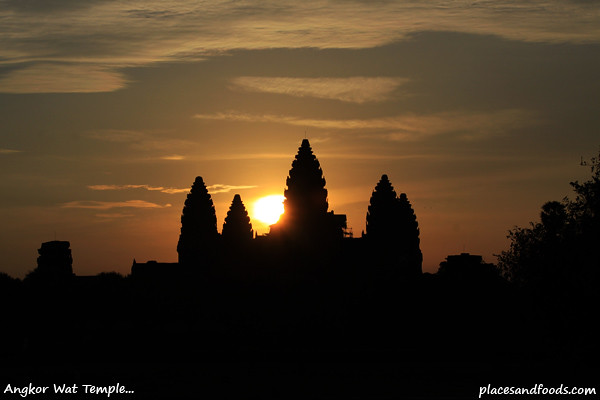
Angkor Wat is the most popular temple in Cambodia. You probably seen it magazines, TV, guide books, post cards and so on. The history of Angkor Wat is an interesting one. This is what I manage to find from Wikipedia as below:
Angkor Wat (Khmer: អង្គរវត្ត) is a temple complex at Angkor, Cambodia, built for the king Suryavarman II in the early 12th century as his state temple and capital city. As the best-preserved temple at the site, it is the only one to have remained a significant religious centre since its foundation – first Hindu, dedicated to the god Vishnu, then Buddhist. It is the world’s largest religious building.[1] The temple is at the top of the high classical style of Khmer architecture. It has become a symbol of Cambodia, appearing on its national flag, and it is the country’s prime attraction for visitors. Angkor Wat combines two basic plans of Khmer temple architecture: the temple mountain and the later galleried temple, based on early South Indian Hindu architecture, with key features such as the Jagati. It is designed to represent Mount Meru, home of the devas in Hindu mythology: within a moat and an outer wall 3.6 kilometres (2.2 mi) long are three rectangular galleries, each raised above the next. At the centre of the temple stands a quincunx of towers. Unlike most Angkorian temples, Angkor Wat is oriented to the west; scholars are divided as to the significance of this. The temple is admired for the grandeur and harmony of the architecture, its extensive bas-reliefs, and for the numerous devatas (guardian spirits) adorning its walls.– Source from Wikipedia.org
The modern name, Angkor Wat, means “City Temple”; Angkor is a vernacular form of the word nokor (នគរ), which comes from the Sanskrit word nagar (नगर), Thai, Nakon, meaning capital or city. Wat is the Khmer word which comes from Sanskrit word “Vastu”. Prior to this time the temple was known as Preah Pisnulok (Vara Vishnuloka in Sanskrit), after the posthumous title of its founder, Suryavarman II. –Source from Wikipedia.org

Sunrise at Angkor Wat temple is very popular among the tourists. Hundreds had gathered and positioned their cameras and tripods for the best spot for the sunrise picture. Our tour guide brought us to a secret spot with the least people. Having a good guide is very important for getting the best spot and the best picture. The spot is getting the reflection on the whole building with the sunrise on the small lake at the main entrance of the temple.
There is a small elusive room named Prassat Kok Troung, also known as the Chamber of Echoes. It is called such way because when you thump your chest, the echoes will fill the chambers. It was quite cool actually as the echoes fill the chamber but finding the chamber could be a hard task without a guide.

Unfortunately, this is a common sight in Angkor Wat temple, many statues were beheaded by poachers to sell at lucrative black market around the world many years ago. With the help of the International communities, these statues are slowly restored one by one.
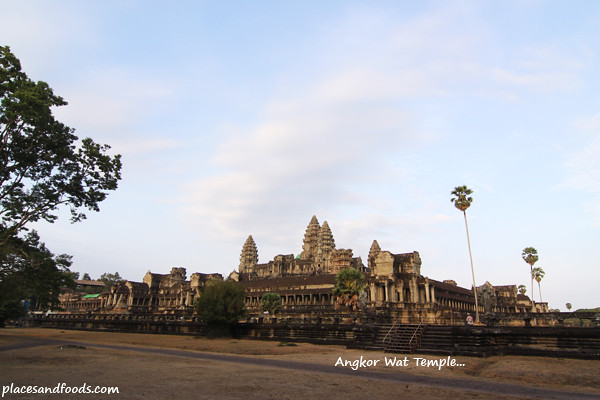
We spent at least two hours venturing Angkor Wat temple and you probably need more time. Remember to bring enough water as it can be very dehydrating during summer especially with temperature hits 40 degree celsius at noon.
For the travel tips for Angkor Temple, you can read Travel Tips for Angkor Wat, Siem Reap, Cambodia
Bayon Temple
After Angkor Wat temple, we head to the Bayon Temple. Bayon is built in late 12th century or early 13th century as the official state temple of the Mahayana Buddhist King Jayavarman VII. You can easily recognise this temple because of its unique characteristics of the huge stone faces of Buddha.

The Bayon stands at the centre of Jayavarman’s capital Angkor Thom. Following Jayavarman’s death, the temple was modified by later Hindu and Theravada Buddhist kings in accordance with their religious preferences. – Source from Wikipedia.org
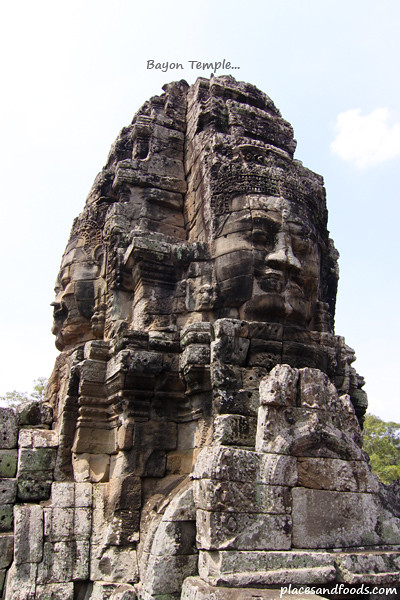
The stone faces of Bayon Temple is the iconic stamp of the temple.
You can ventured around the temple and find many angles to take pictures of this temple, this was one of them.
These are inscriptions on the Bayon Temple, it is hard to imagine this was carved 800 years ago. Most of them still preserved well even enduring centuries of heat and rain.
Like we mentioned earlier, Bayon Temple stands out from the rest with its stone faces. There are 216 gigantic faces on the temple’s towers so if you want to find it all, it will take hours. Expect to spend an hour or two venturing this temple and it is located nearAngkor Wat temple and within the Angkor Circuit.
Banteay Srei Temple
Banteay Srei temple is located in Siem Reap and not in the Angkor Circuit. It took us almost an hour to travel from Angkor Circuit to Banteay Srei temple.
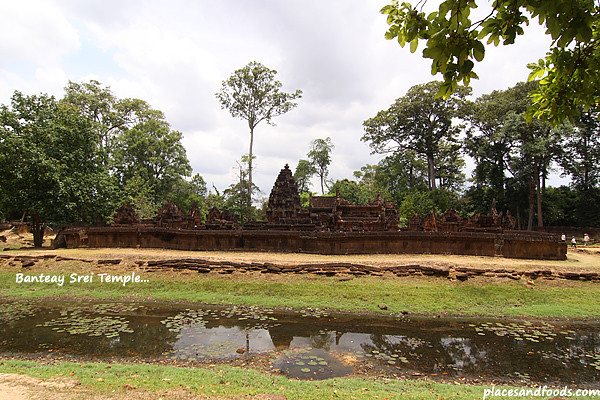
Banteay Srei temple was built on 967 AD and it was the only major temple at Angkor not built by a monarch. The temple was dedicated to the Hindu god Siva.
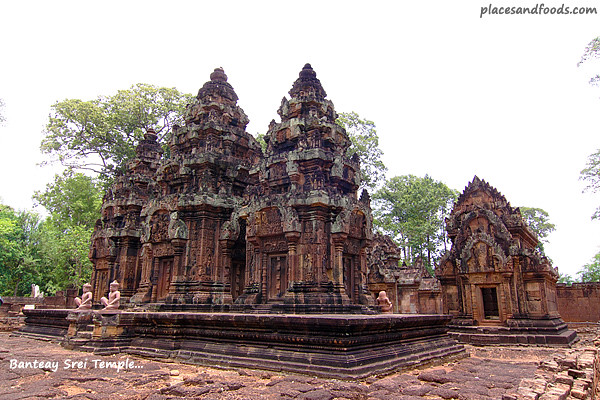
It is hard to tell that how fine the carvings and the size of this temple from this picture, the temple is relatively smaller than most of the temples in Angkor.
Look at the details of the carving and also the statue, it was absolute gorgeous!

The temple is often called as citadel of the women or citadel of the beauty due fine carvings on the walls and also the tiny dimensions of the buildings themselves. The details of the carvings on the walls of the temple are finer. This makes Banteay Srei temple another worthy place to visit in Siem Reap.
Roluos Group of Temples: Bakong, Preah Ko and Lo Lei Temple
Roluos Group of Temples consists of Bakong, Preah Ko and Lo Lei Temple. Roluos Group of Temples are the least popular temples in Angkor compare to Angkor Wat, Bayon and Banteay Srei temples. The tour guide was surprised that we were going for Roluos group of temples tour as it is not popular with tourists. I didn’t research much about it as well when I purchased it on AirAsiaGo.com but it was an educational tour to visit the temples. Below are some of the hard facts.
Roluos is a Cambodian modern small town and an archeological site about 13 km east of Siem Reap along NH6. Once it was the seat of Hariharalaya, first capital of Khmer Empire north of Tonlé Sap (as the first capital in the strict sense of the term could have been Indrapura, identifiable with Banteay Prey Nokor).
Among “Rolous Group” of temples there are some of the earliest permanent structures built by Khmer. They mark the beginning of classical period of Khmer civilization, dating from the late 9th century. Some were totally built with bricks, others partially with laterite or sandstone. – Source from Wikipedia.org
Bakong Temple
It took almost an hour to reach Bakong Temple from Bantreay Srei Temple.
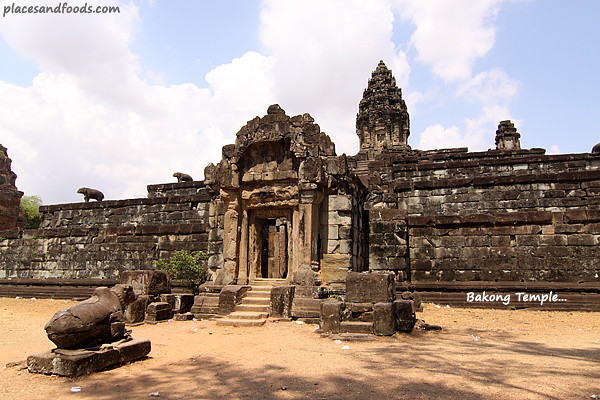
Bakong temple is the first temple mountain of sandstone constructed by rulers of the Khmer empire at Angkor near modern Siem Reap in Cambodia. In the final decades of the 9th century AD, it served as the official state temple of King Indravarman I in the ancient city of Hariharalaya, located in an area that today is called Roluos. – Source from Wikipedia.org
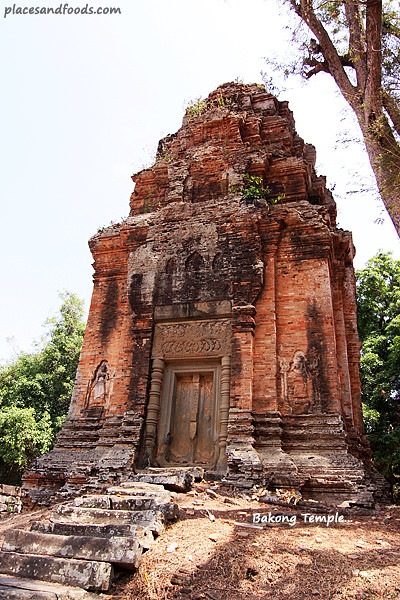
The brick towers surrounding the temple are aging. Stood tall for centuries, the towers had taken its toll through the hot and wet climate of Siem Reap. It is the matter of time restoration work will starts on Bakong Temple.
Preah Ko Temple
Next we went to Preah Ko Temple. Preah Ko temple was much smaller than Bakong temple and it was the first temple to built in Roluos.
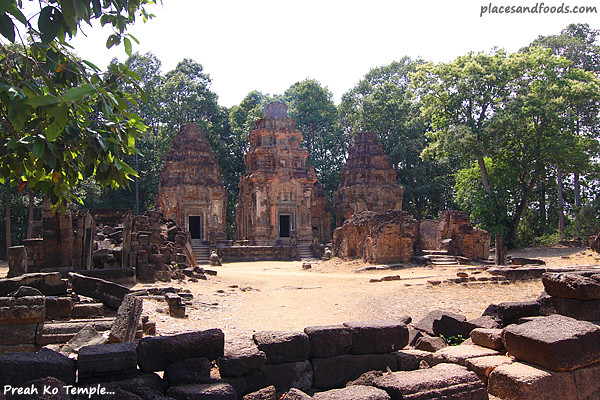
Preah Ko (Khmer: ប្រាសាទព្រះគោ) (Khmer, The Sacred Bull) was the first temple to be built in the ancient and now defunct city of Hariharalaya (in the area that today is called Roluos), some 15 kilometers south-east of the main group of temples at Angkor, Cambodia. The temple was built under the Khmer King Indravarman I in 879 to honor members of the king’s family, whom it places in relation with the Hindu deity Shiva. – Source from Wikipedia.org
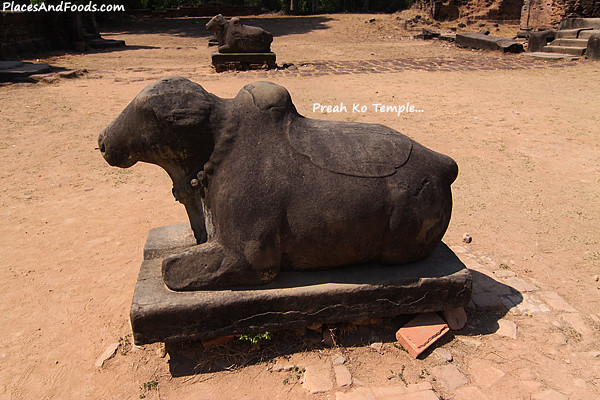
The significant difference between Preah Ko temple and the rest are the three bull statues of sandstone located in front of the temple. All of them are facing the temple’s central towers and that is how the name Preah Ko (sacred bull) came from.
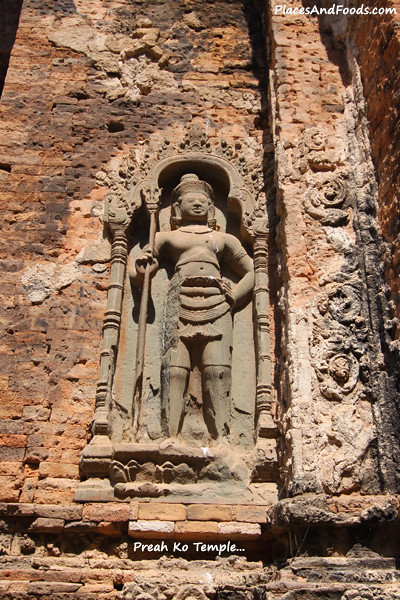
There were already restoration works on the temple. The restoration can be notable with the newer bricks and some of the newer sculptures.
Lo Lei Temple
Lo Lei Temple was the last temple we visited for the second day. The temple was the least popular among the other temples of Roluos temples.
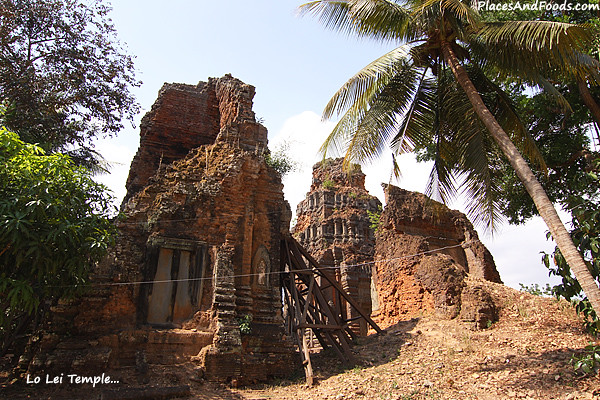
Lo lei Temple was in bad condition mostly due to the intense weather of hot and wet for centuries.
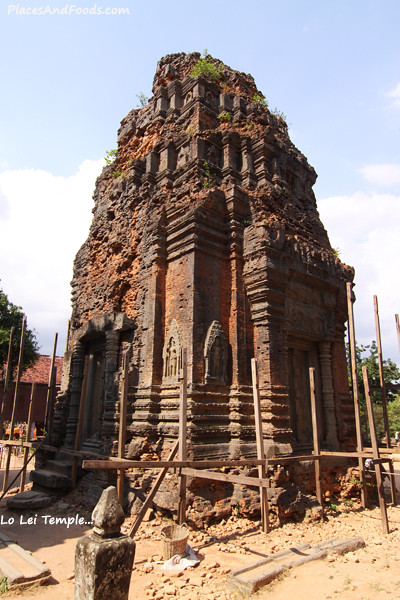
Some of the restoration works had started but it will take years to restore this to its original beauty. This was our last stop for our second day in Siem Reap Cambodia. If you want to read more about Lo Lei Temples, visit Lolei, Siem Reap Roluos Northernmost Temple
Overall, our temples adventure on day two was another educational tour. We visited Hindu and Buddhist temples that were built by the might kings of the past. This has shown that how strong the kingdoms were in this same place. Hence, we felt it was worth it to visit Roluos group of temples as it was historically educational to us. We felt closer to this amazing place after visiting the temples and understanding the history behind each and every one of it.
Please check out our other Siem Reap adventure:
Siem Reap Cambodia Day 1: AirAsiaGo.com Package, Tonle Mekong Restaurant, Angkor Spirit Palace Hotel, Lake Tonle Sap, Killing Field, Pub Street and Le Tigre de Fapier
Siem Reap Cambodia Day 2: Angkor Wat, Bayon, Banteay Srei, Roluos Group Temples, Bakong, Preah Ko and Lo Lei
Siem Reap Cambodia Day 3 Part One: Preah Khan, Neak Pean, Ta Som, Eastern Mebon, Pre Rup
Siem Reap Cambodia Day 3 Part Two: Sras Srang, Ta Prohm / Tomb Raider Temple, Ta Keo, Banteay Kdei, Prasat Kravan, Phnom Bakheng

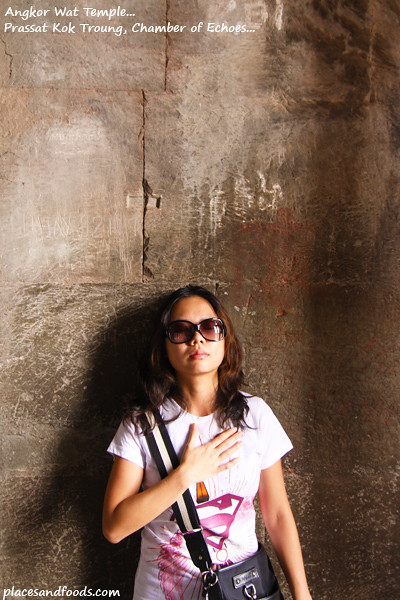
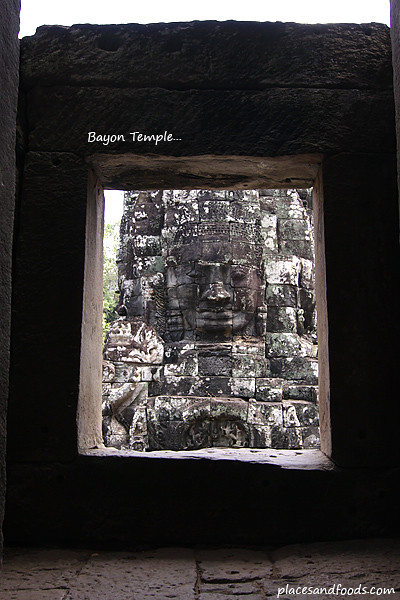
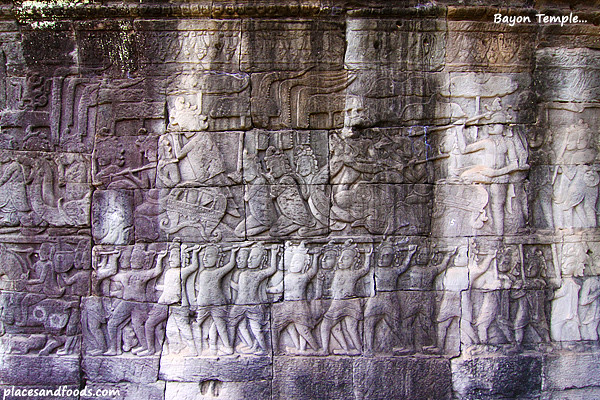
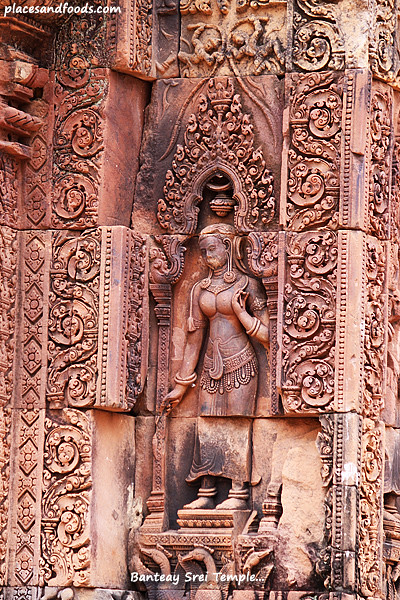





The intricacy of ruins in Angkor really impress me. Such a marvelous wonder.